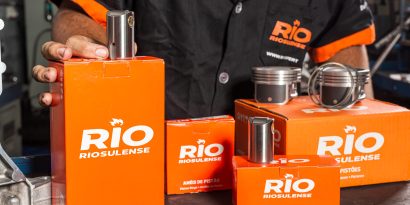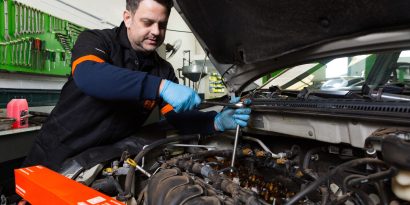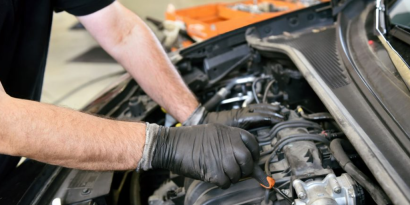Those who work with automotive repair and grinding already know that vehicles equipped with 3-cylinder engine are increasingly frequent “visitors” to workshops. There is no doubt that this is a trend that’s here to stay — and it is essential that the Expert is prepared to deal with these machines. With this in mind, in this article we will take a closer look at the challenges of grinding 3-cylinder engines and their particularities. Follow us and enjoy reading!
Understanding engine downsizing and its peculiarities
It is not surprising that the automobile sector has undergone significant evolution, driven mainly by growing environmental restrictions and the need to reduce pollutant emissions. In this context, one of the most notable changes is the famous downsizing, when traditional 4-cylinder engines began to make way for 3-cylinder engines.
It is a promising new reality, of course. But while this change brings several benefits, such as greater fuel efficiency and a much more controlled emission of pollutants, one cannot ignore the fact that it also presents unique challenges for specialized workshops and grinders.
Not least because the reduction in the number of cylinders, despite being an effective strategy for achieving environmental objectives, implies a series of extra technical complexities during the maintenance and reworking of these engines — especially when we consider that the difficulty of the repair is directly related to the state in which the engine arrives for maintenance.
In most cases, for example, to ensure an accurate diagnosis, it is necessary to perform a complete disassembly of the block and carry out a thorough cleaning of all its components. A process that allows the professional to accurately identify existing wear and damage, it is true, but which also involves a more complex workforce, requiring precise methodology of critical components, such as the diameter of the cylinders and the height of the cylinder head.
Another significant challenge is the need to use baseline technical literature for the engine components’ evaluation. This is because 3-cylinder engines, due to their compact and less balanced configuration compared to 4-cylinder engines, are more susceptible to problems related to uneven wear and warping of the block.
Therefore, following the technical specifications and procedures recommended by the manufacturer is crucial to ensure that the grinding is performed correctly and that the engine may return to its original operating condition. Not to mention, of course, that the grinding of 3-cylinder engines can present additional challenges in terms of alignment and balancing of internal components.
This is also due to the smaller number of cylinders, since any deviation or misalignment during the grinding process can result in excessive vibrations and inadequate performance, compromising engine durability and efficiency. Thus, it is essential for professionals to use high-precision tools and advanced measurement techniques to ensure that all components are within the specified tolerances.
The good news is that we have separated 6 valuable tips for the grinding of 3-cylinder engines
Real Experts know that RIO has an unquestionable commitment to efficiency and quality when it comes to automotive repair and grinding. So, to help these professionals face the challenges and complexities of 3-cylinder engine grinding, we have put together some good practices that can make all the difference when working with these machines. Take note:
1 – Check the history of overheating
Before starting a 3-cylinder engine grinding process, it is vital to check if the set has overheated at any time. Overheating can cause serious damage to the engine block and cylinder head, resulting in warping that requires correction before grinding. Therefore, before proceeding, make sure that the block is within the proper tolerances.
2 – Inspect the engine block
A detailed visual inspection of the engine block is also indispensable to identify any signs of warping or excessive wear. Use precise measuring instruments to assess the flatness of the block and check that it is in a condition to receive adequate grinding before getting down to work.
3 – Always work with oversized parts
During grinding, it is common needing to replace components with oversized parts, such as bearing, piston and ring kits, as well as cylinder liners. These parts must be carefully selected to ensure that they are compatible with the engine and that they provide the necessary adjustment to restore original performance.
4 – Follow technical literature
As mentioned before, following the manufacturer’s specifications is crucial to the success of the grinding. Make sure that all recommended procedures are being followed and that the parts used meet the original specifications of the engine.
5 – Perform a compression test
After assembling the engine, it is still important to carry out a compression test on all the cylinders to ensure that the internal components are sealed perfectly. This test helps to identify possible assembly faults, such as misaligned piston rings or valves that are not sealing properly. A uniform result on all 3 cylinders is indicative of successful grinding.
6 – Check the cooling system
Finally, remember that 3-cylinder engines, due to their lower heat dissipation capacity, are more prone to overheating problems. During grinding, take the opportunity to inspect and, if necessary, replace critical cooling system components such as the water pump, radiator and thermostatic valve. Ensuring that the cooling system is in perfect condition is essential to avoid future damage to the reconditioned engine.
And do not forget: replacement is with RIO!
Grinding 3-cylinder engines can be challenging, but with the right techniques and knowledge, it is possible to carry out high-quality work that guarantees the engine’s longevity and good performance. And, in this respect, RIO never lets you down! Here, Expert has a complete catalog of spare parts, including specific components for 3-cylinder engines and hundreds of oversized parts to make your job easier.
Never give bad luck a chance! Check out our portfolio, get to know our solutions better and find out how RIO can help your workshop overcome the challenges of downsizing with excellence, guaranteeing satisfied customers and an always-full grinder!





